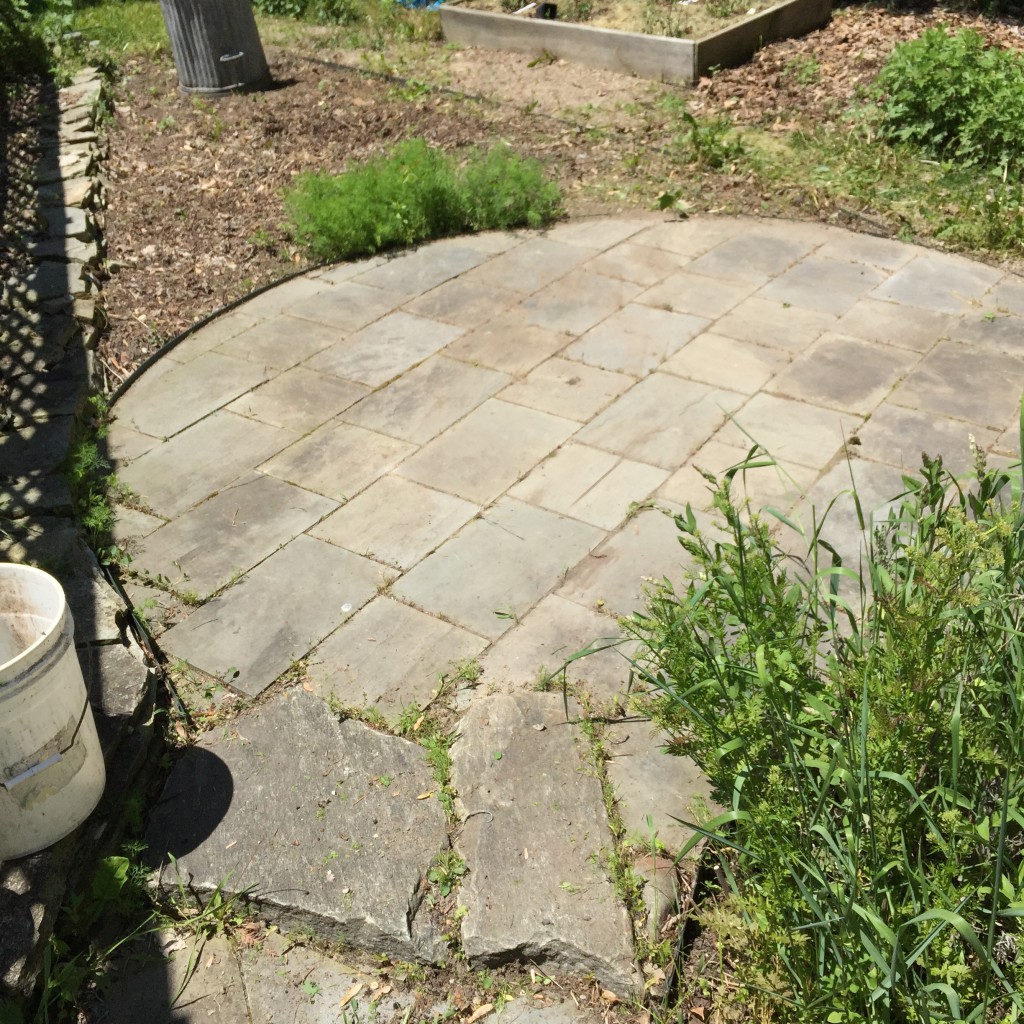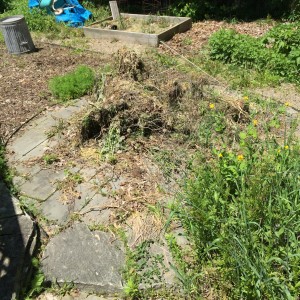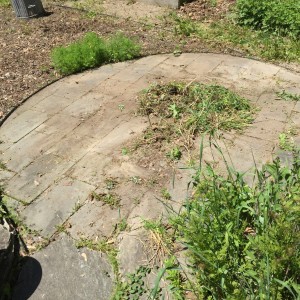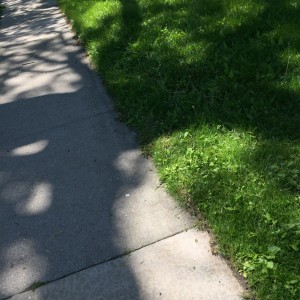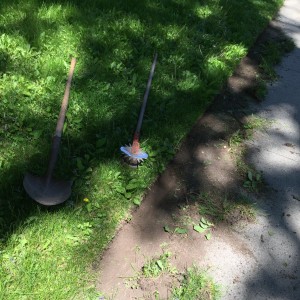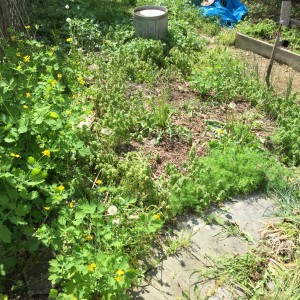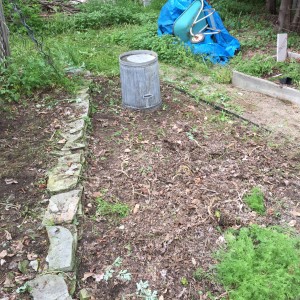It’s hard to believe that meaningful amounts of gardening can be accomplished in just 20 minutes. If there’s a trick, it’s learning to imagine what you can get get done and not over extending yourself. In the interest of transparency, Jan and I have started this series of posts about what 20 minutes looks like.
BEFORE:

The gravel path at the entrance to our garden from the back porch, shown au naturel
A path is not a bed and to my way of thinking, it shouldn’t need weeding. But it does. The previous owner had this nice, snaking path installed, with a good dense subfooting and pea gravel on top. If it was a bed, I could mulch it, like the bed seen to the right of the picture, and most weeds would be discouraged. Once the season starts, foot traffic will discourage most weeds but right now, those diligent weeds have taken root and have grown.
I have a special technique for weeding the gravel beds. I pull the large weeds out normally. The roots largely penetrate only a couple inches or so. For the others, I rake my fingers through the gravel briskly dislodging their tiny roots. For the most part, these smaller weeds accumulate in my fingers and I can remove them easily. The trouble is that my fingertip start to tingle after a few minutes work. Truth be told, I didn’t make it even a whole 20 minutes. Sure, I could have found gloves… and as I scrubbed the dirt off my hands and scraped it from underneath my fingernails, but I didn’t.
AFTER:
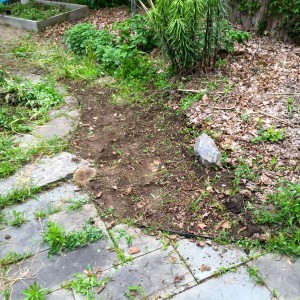
The gravel path entrance after “20-ish” minutes of weeding.
Not much to say, other than I like how it’s coming along. A bit more tomorrow, perhaps.
